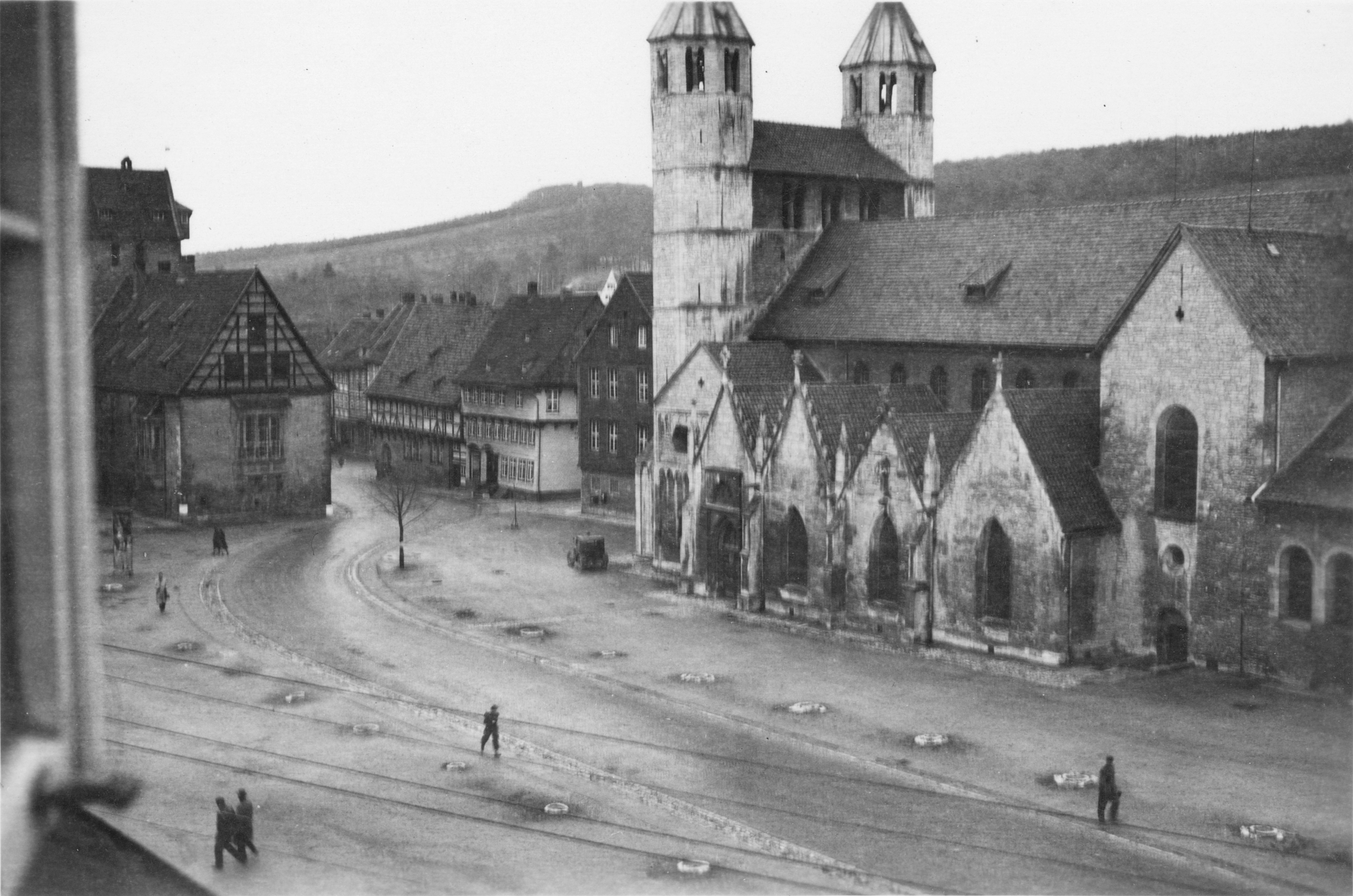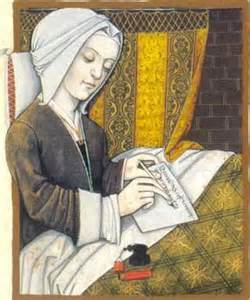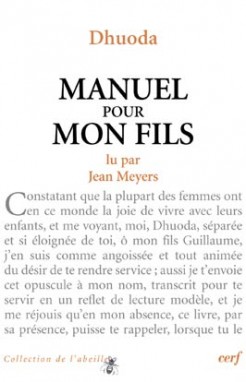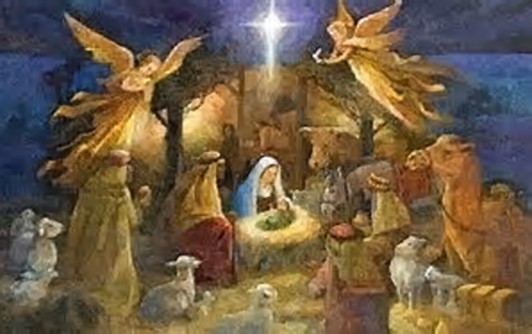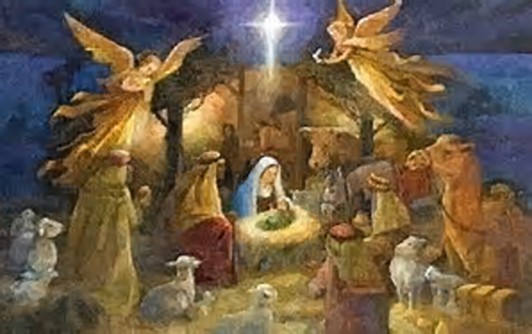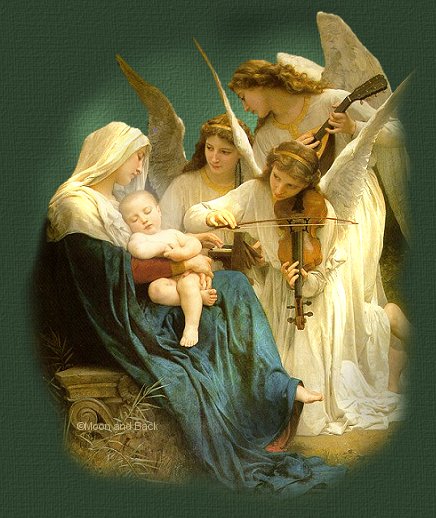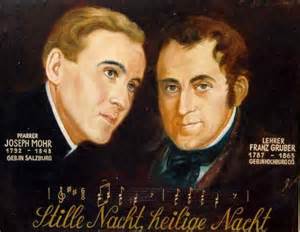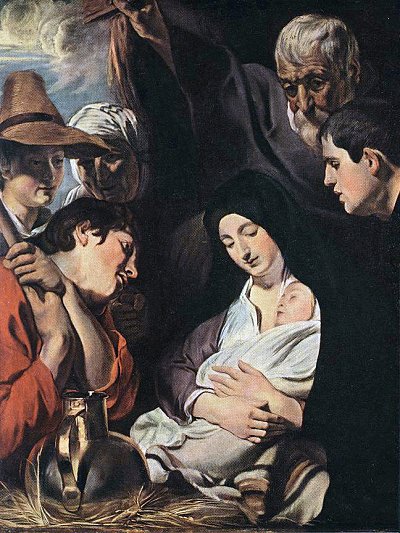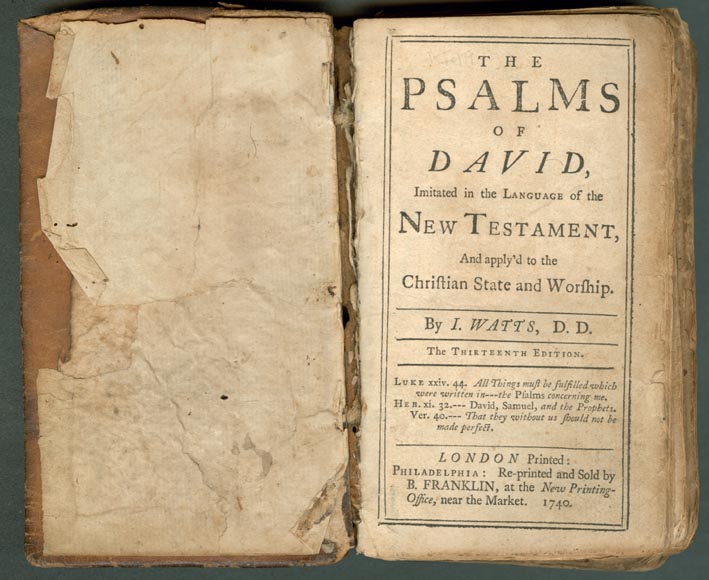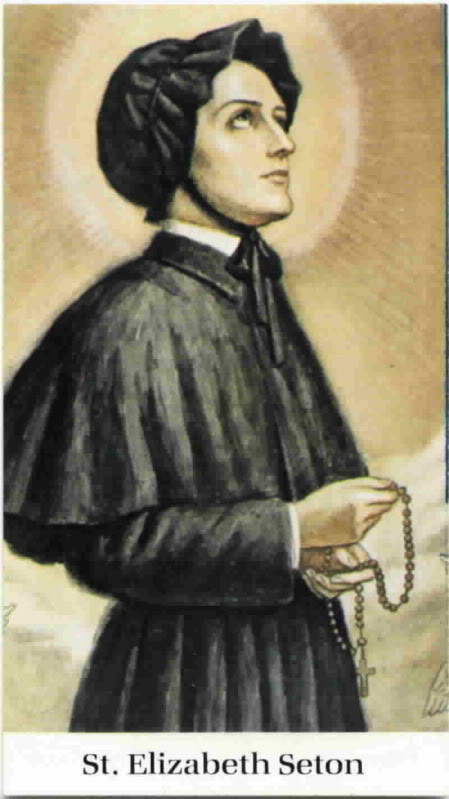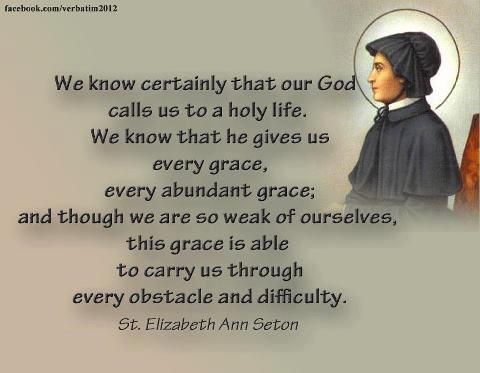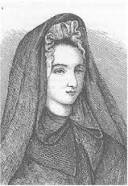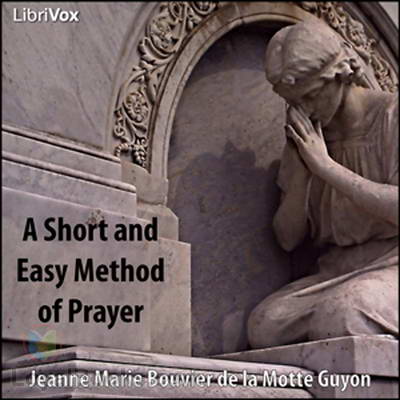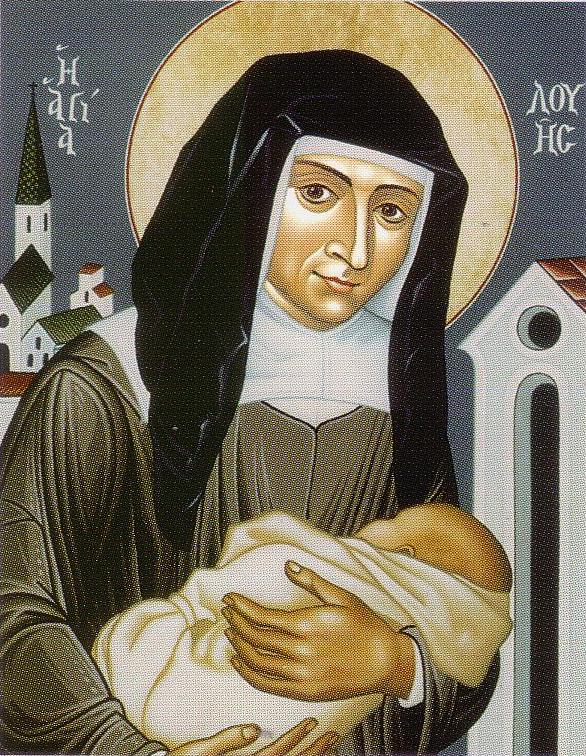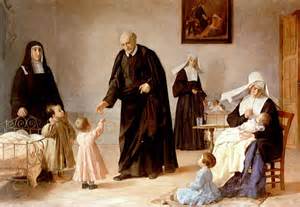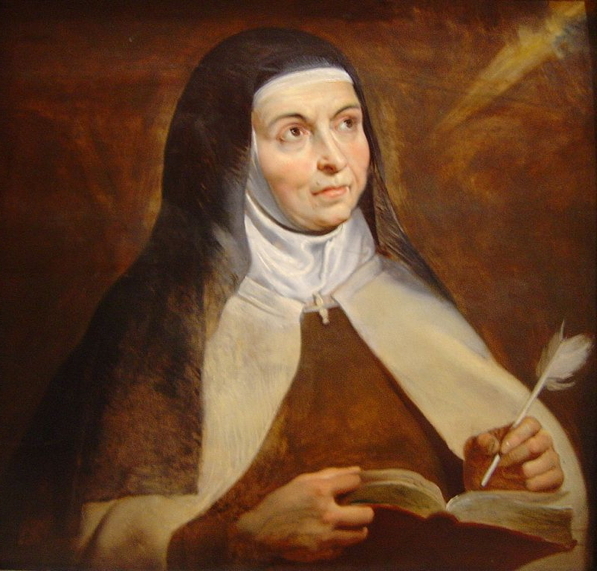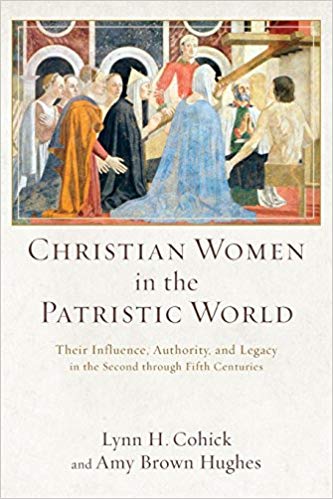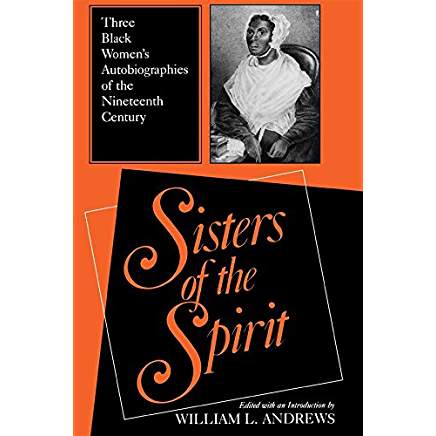Do not despise them, even though they’re full of faults,
But, with your gentle heart, praise the deeds of God. Hrotsvitha
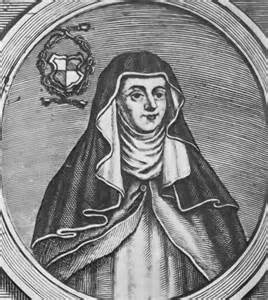 During the medieval times women often went to convents as a way to serve God. It was a good, safe option for women who did not get married. The convent also enabled women to get an education. Convents were the ideal environment to express their artistic and literary talents.
During the medieval times women often went to convents as a way to serve God. It was a good, safe option for women who did not get married. The convent also enabled women to get an education. Convents were the ideal environment to express their artistic and literary talents.
One such woman was Hrotsvitha, a young nun in a convent at Gandersheim in the late 10th century. The convent at Gandersheim was especially well known as a cultural and educational center.
Gandersheim was different from most convents because it was established by Duke Liudolf and his wife and her mother in 852 to be a “free abbey”. In other words, it was not connected to the hierarchy of the church. Gandersheim was answerable to the local ruler until king Otto 1 declared it to be a completely free abbey.
The abbesses of this convent were related to the reigning family. During Hrotsvitha’s time the abbess was Gerberga, the niece of the Holy Roman Emperor, Otto 1 the Great. All of the nuns at this abbey were of noble birth, so we know that Hrotsvitha came from the aristocracy and may have even been distantly related to the king.
Some of the nuns took vows and became full-fledged nuns; others did not take vows and remained canonesses. Hrotsvitha did not take the vow of poverty, so she remained a canoness. She was able to control her money and have servants and other luxuries that most nuns did not. However, she did take the vows of obedience and chastity.
Hrotsvitha is considered to be Germany’s first poet and playwright. While at the convent she wrote six plays – they were comedies. She also wrote stories, poetry, and a history of the abbey.
As was common in those days, Hrotsvitha wrote in Latin. That was the language that educated people used for writing. We know from things she said about events of her day that she must have written her poetry and plays some time after 968. There was an extensive library at the abbey. Allusions to famous lyric poets such as Ovid, Terence, Virgil, and Horace confirm the fact that Hrotsvitha made much use of the library.
Why would a nun write comedies? There were several reasons.
Hrotsvitha had studied the Scriptures and she was aware of the evil of her times. The church was very corrupt. Church leaders were involved in greed, licentiousness, and immorality. It was not uncommon for priests to force women into compromising positions. Hrotsvitha wanted a way to admonish the wicked rulers.
Women were not expected to teach or preach in the medieval ages. How could Hrotsvitha call for reform? As a woman she wanted to be seen as sharing a spiritual message but not as preaching, so she put her thoughts into six comedic plays.
Another reason that Hrotsvitha deliberately chose the medium of comedic plays was that in Hrotsvitha’s day theater was secular and outrageously immoral. Hrotsvitha wanted to present her own Christian version of this interesting literary form.
Her comedies and poetry were probably mostly shared with the other women at the abbey. Hrotsvitha would enjoy writing something so different from the usual writing of her time thinking that it would go no further than her sisters. She could be bold and express her thoughts on the sins of the church leaders in her day in a very creative way.
Hence, the quote above – Hrotsvitha calls for her readers to forbear with her humble efforts. She asks them to praise God for His working, not hers.
Hrotsvitha realizes that she might be criticized by men when they realize that she is pointing the finger at their corruption and so she is careful to point out that she is only seeking praise for Christ.
And let him not scorn the frail sex of the woman of no importance
Who played these melodies on a frail reed pipe;
But rather let him praise Christ’s heavenly mercy:
He does not want to destroy sinners…
Hrotsvitha admitted to blushing with shame when writing about sexual sin. In her day, and in ours in certain cultures such as the Muslim culture, women were blamed for all sexual temptations. She was calling the men to take responsibility for their own sin. She had a purpose in writing about matters such as lasciviousness. She stressed that she was trying to show how ‘womanly frailty emerges victorious and virile force, confounded is laid low’.
She wants to show the strength in weakness of Christian women and the weakness in power of the men. In the end it is the men who should blush.
For example, in one of Hrotsvitha’s comedies, Emperor Diocletian orders three chaste virgins to deny their faith. They refuse and are thrown into prison. An army general, Dulcetius sees how beautiful they are and decides to take advantage of them.
Dulcetius locks the women in a kitchen, thinking to return later that night and have his way with them. The women pray for protection. God answers their prayers in an admittedly strange-sounding way to us –(but remember this is written as comedy – to make a serious point in a dramatic way.)
When Dulcetius returns for the girls things don’t exactly go according to plan. As he enters the kitchen:
Befuddled, he begins to caress the pots and pans, while the girls watch through a crack in the wall. “Why, the fool is out of his mind. He fancies he has got hold of us,” reports one of them. “Now he presses the kettle to his heart, now he clasps the pots and pans and presses his lips to them . . . His face, his hands, his clothes are all black and sooty; the soot which clings to him makes him look like an Ethiopian.” One of her companions comments, “Very fitting that he should be so in body, since the devil has possession of his mind.”
The girls in the play attribute their escape from Dulcetius’s evil attempts to the grace of God. The moral lesson in the play is that Hrotsvitha wants women to understand that they can turn to God for protection. And she has found a clever way to show men that they are “out of their minds” or “immoral” for taking advantage of the “weaker” sex.
Some of Hrotsvitha’s plays were lost for centuries. Then in 1502 they were discovered and published in Latin. They were published in English in 1920.
Many of Hrotsvitha’s poems were written to honor the saints, including the Virgin Mary, as well as Agnes, Basil, and the martyr Pelagius (not the 4th century heretic – but a later Pelagius who was tortured and martyred by the Muslims.)
Her last extant work, probably written about 973 or later, is a poem on the founding of Gandersheim. As in her other works, Hrotsvitha opens her work with humility:
Behold, my spirit, lowly and submissive,
Breaks forth to tell the origins of blissful Gandersheim.
The primary inspiration for this poem was the Gospel account of the birth of the Lord Jesus Christ. There are many allusions in the poem to “shepherds” and “guiding lights”.
Hrotsvitha claimed often that she was so blessed to have the gift of writing. In spite of being a woman and living in a convent, she was able to express her thoughts in a way that inspired many others. Even if not many people would see her works, she felt that she was nearer to God by using His gift to her. She was thankful that God had given her a way to address the wrongs of her times in a Scriptural, yet creative way.
We can learn from Hrotsvitha’s example of humility and service. We can use our gifts with joy and thanksgiving and praise to the One Who gave them to us.
